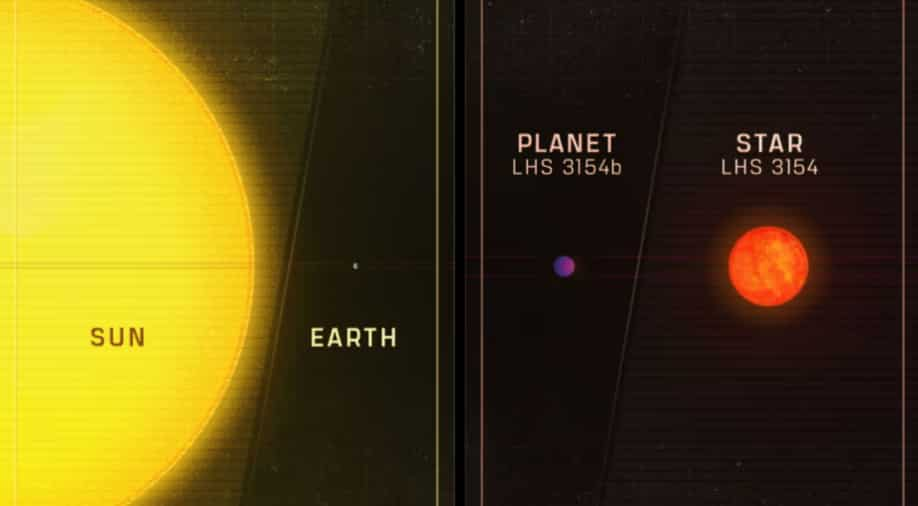Exoplanet 13 times bigger than Earth found orbiting star 9 times smaller than our Sun
Story highlights
Researchers said the exoplanet- called LHS 3154b- is 13 times bigger than Earth, and is orbiting the star called 3154, which is nine times smaller than the Sun.
Researchers have detected an exoplanet that appears to be far too massive for its host star. According to the study published in the journal Science, researchers said the exoplanet- called LHS 3154b- is 13 times bigger than Earth, and is orbiting the star called 3154, which is nine times smaller than the Sun. The planet was found using an instrument called the Habitable Zone Planet Finder (HPF)
"We used radial velocity observations to detect a Neptune-mass exoplanet orbiting LHS 3154, a star that is nine times less massive than the Sun," the study said.
"The exoplanet’s orbital period is 3.7 days, and its minimum mass is 13.2 Earth masses," it added. The study said that planets form in protoplanetary disks of gas and dust around young stars that are undergoing their formation process.
trending now
The amount of material in the disk determines how big the planets can grow. "In the core-accretion simulations, we show that close-in Neptune-mass planets are only formed if the dust mass of the protoplanetary disk is an order of magnitude greater than typically observed around very low-mass stars," it further added.
Speaking to The Guardian, the study's co-author Professor Suvrath Mahadevan, of Penn State University said that this discovery drives home the point of just how little is known about the universe.
"We wouldn’t expect a planet this heavy around such a low-mass star to exist," Professor Mahadevan said. “The planet-forming disk around the low-mass star LHS 3154 is not expected to have enough solid mass to make this planet,” he added.
Mahadevan also said there is a need to re-examine the understanding of how planets and stars are formed.
Speaking on the findings, Prof Frédéric Masset of the National Autonomous University of Mexico said that such a big planet in the vicinity of such a small star is “unheard of” and could prompt a rethink of planetary formation, The Guardian reported.
















